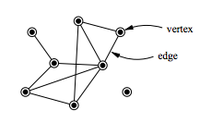
Photo from wikipedia
Central to modern neuroscientific theories of human intelligence is the notion that general intelligence depends on a primary brain region or network, engaging spatially localized (rather than global) neural representations.… Click to show full abstract
Central to modern neuroscientific theories of human intelligence is the notion that general intelligence depends on a primary brain region or network, engaging spatially localized (rather than global) neural representations. Recent findings in network neuroscience, however, challenge this assumption, providing evidence that general intelligence may depend on system‐wide network mechanisms, suggesting that local representations are necessary but not sufficient to account for the neural architecture of human intelligence. Despite the importance of this key theoretical distinction, prior research has not systematically investigated the role of local versus global neural representations in predicting general intelligence. We conducted a large‐scale connectome‐based predictive modeling study (N = 297), administering resting‐state fMRI and a comprehensive cognitive battery to evaluate the efficacy of modern neuroscientific theories of human intelligence, including spatially localized theories (Lateral Prefrontal Cortex Theory, Parieto‐Frontal Integration Theory, and Multiple Demand Theory) and recent global accounts (Process Overlap Theory and Network Neuroscience Theory). The results of our study demonstrate that general intelligence can be predicted by local functional connectivity profiles but is most robustly explained by global profiles of whole‐brain connectivity. Our findings further suggest that the improved efficacy of global theories is not reducible to a greater strength or number of connections, but instead results from considering both strong and weak connections that provide the basis for intelligence (as predicted by the Network Neuroscience Theory). Our results highlight the importance of considering local neural representations in the context of a global information‐processing architecture, suggesting future directions for theory‐driven research on system‐wide network mechanisms underlying general intelligence.
Journal Title: Human Brain Mapping
Year Published: 2022
Link to full text (if available)
Share on Social Media: Sign Up to like & get
recommendations!